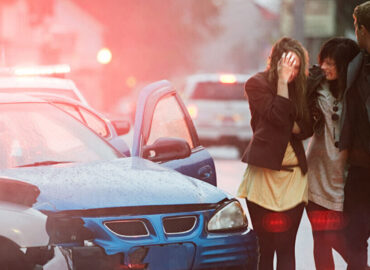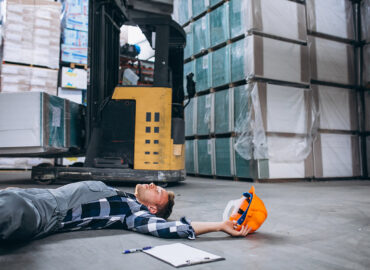Slip and Fall
At our personal injury law firm, we understand that life can sometimes throw you a curveball when you least expect it. One of these curveballs is the classic slip and fall scenario. Imagine a scenario where you’re going about your day, and suddenly, a misstep on someone else’s property leaves you on the ground. It’s not just a simple stumble; it’s a potential legal matter.
To succeed in a slip-and-fall case, the plaintiff must demonstrate the existence of a hazardous condition on the property that directly led to their fall. The ability to pinpoint the cause of the fall is pivotal because without a clear understanding of what precipitated the incident, it becomes challenging to establish whether the defendant was negligent in either creating or addressing the dangerous condition. In situations where the plaintiff stumbles due to their own actions or experiences an unexpected physical weakness resulting in a fall, the defendant cannot be held liable solely because the incident occurred on their property. If the plaintiff or any witnesses cannot provide a valid explanation for the fall, the defendant bears no legal responsibility. It is essential that there is a tangible factor associated with the property, such as a structural defect or a foreign object or substance, that directly contributed to the fall.
Given the critical nature of this aspect in slip-and-fall lawsuits, we diligently seek sources of evidence to elucidate the cause of the plaintiff’s fall. These sources may include witnesses, police reports, paramedic records, or emergency room records, all of which can assist in establishing the sequence of events leading to the fall. In a case we handled, for instance, our client slipped and fell on a wet surface in a hotel bar, resulting in a hip fracture. Interestingly, the client did not initially perceive the presence of water, but her husband observed it and felt it on the back of his winter coat while assisting our client to a chair.
Workplace Injuries: Whether it’s a workers’ compensation claim or a workplace injury lawsuit, Octavio Duran is your dedicated advocate.
FAQ
Seek medical attention immediately, report the incident to the property owner or manager, and gather evidence such as photos and witness statements.
Yes, if your injury was caused by the negligence of the property owner or manager, you may be able to file a personal injury lawsuit.
The property owner or manager may be held liable if their negligence led to the hazardous conditions that caused your slip and fall.
Common causes include wet or slippery floors, uneven or damaged flooring, inadequate lighting, and lack of warning signs.
To prove negligence, you must show that the property owner or manager knew or should have known about the hazardous conditions and failed to address them.
Yes, you can sue if the slip and fall occurred due to negligence on the part of the public entity responsible for maintaining the property.
You may be able to recover damages for medical expenses, lost wages, pain and suffering, and any other losses related to the accident.
Yes, you may still be able to recover damages, but the amount you receive may be reduced based on your level of fault.
Yes, if the store’s negligence caused the hazardous conditions that led to your slip and fall, you may have a valid claim.
You may be eligible to file a workers’ compensation claim, but suing your employer directly for a slip and fall injury can be complex.
Yes, if the homeowner’s negligence led to the hazardous conditions that caused your slip and fall, you may have grounds for a lawsuit.
If the sidewalk was not properly maintained or had hazardous conditions, you may be able to sue the entity responsible for its upkeep, such as the city or property owner.
You need to contact a lawyer immediately in order to assess your options. It may be necessary to file a lawsuit against the owner.
- Wet or slippery floors: Spills, leaks, or recently mopped floors can create slippery surfaces.
- Uneven or damaged flooring: Cracked, broken, or uneven flooring can create tripping hazards.
- Weather conditions: Ice, snow, or rainwater can make walking surfaces slippery.
- Lack of warning signs: Failure to post signs warning of wet floors or other hazards.
- Poor lighting: Inadequate lighting can make it difficult to see potential hazards.
- Cluttered walkways: Objects left in walkways can create tripping hazards.
- Loose rugs or carpets: Unsecured rugs or carpets can slip underfoot.
- Uneven stairs or steps: Steps that are uneven or poorly maintained can lead to falls.
- Defective footwear: Wearing inappropriate footwear can increase the risk of slipping.
- Improperly maintained walkways: Cracks, potholes, or debris on walkways can cause falls.
- Inadequate handrails: Lack of handrails or poorly installed handrails on stairs can lead to falls.
- Failure to clear snow or ice: Property owners neglecting to clear snow and ice from walkways can create hazardous conditions.
- Improperly secured mats or runners: Mats or runners that are not properly secured can slip or bunch up, causing tripping hazards.
- Spilled substances: Spills of liquids or other substances that are not cleaned up promptly can create slippery surfaces.
- Construction or maintenance work: Work areas that are not properly cordoned off or marked can pose hazards to pedestrians.
Seek Medical Attention: If you’re injured, seek medical attention immediately. Your health and safety should be your top priority.
Report the Incident: Report the accident to the property owner, manager, or landlord. Ask them to document the incident and request a copy of the report.
Gather Evidence: If possible, gather evidence at the scene, such as photos of the hazardous condition that caused your fall and contact information for any witnesses.
Document Your Injuries: Keep track of your injuries, including photographs and medical records. This documentation will be important if you decide to pursue a claim.
Avoid Discussing the Incident: Avoid discussing the details of the accident or admitting fault with anyone other than your attorney.
Contact an Attorney: Consider consulting with a personal injury attorney who has experience with slip and fall cases. They can advise you on your legal rights and help you navigate the claims process.
Follow Your Doctor’s Orders: Follow your doctor’s treatment plan and attend all follow-up appointments to ensure you recover fully from your injuries.
Keep Records: Keep detailed records of all medical expenses, lost wages, and other costs related to the accident. This information will be important for your claim.
You should contact your insurance provider as soon as possible if you are a homeowner or property owner and someone was hurt on your property. Often, homeowners’ insurance will pay for lawsuits involving residential premises liability.
You have an obligation to take reasonable steps to either fix any potential hazards on your property (such as broken steps, holes in the ground, broken tree limbs, etc.) or to alert others about the potential for danger.





